Spring ![]() Summer
Summer ![]() Fall
Fall ![]() Winter
Winter ![]()
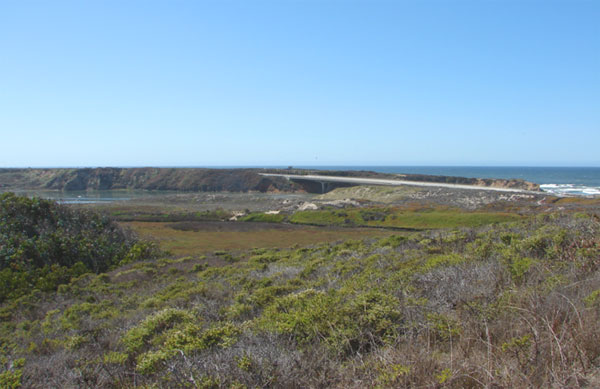
Pescadero Beach and Marsh, looking southwest, October, 2007 (Jennifer Rycenga)
If San Mateo County birders had to name a single favorite San Francisco Peninsula locality, many would choose Pescadero. This location, on our scenic south coast, embraces a variety of habitats from rocky shoreline and sand dunes to freshwater marsh, coastal scrub, riparian woodland, grassland and croplands. Many excellent birding spots can be found within a short distance, and services (food, gas, etc.) are readily available. Seeing over fifty species in a day is common at Pescadero, even for dedicated beginning birders; at the right season, accomplished birders can challenge themselves to achieve the centenary mark in a day, all within the confines of the State Park.
Pescadero Marsh, situated directly on the Pacific Flyway, serves as an important stop-over point for migrant shorebirds, a wintering ground for numerous waterfowl, and a breeding ground for a variety of marsh birds. As the only sizable marsh on the California coast between San Francisco Bay and Monterey County it is a rare and valuable resource. A rich and diverse combination of habitats occurs here and visitors will enjoy excellent birding at all seasons.
Resident birds, breeding in the marsh, include Pied-billed Grebe, Great Blue Heron, Mallard, Cinnamon Teal, Gadwall, Ruddy Duck, American Coot, Virginia Rail, White-tailed Kite, Northern Harrier, Black Phoebe, Marsh Wren, Common Yellowthroat, and Savannah and Song Sparrows. In winter, a few hundred ducks congregate in the marsh. The majority are dabblers but there are also a small number of diving ducks, such as Common Goldeneye, Bufflehead, both species of Scaup, Canvasback, and Ring-necked Duck. A small number of Eurasian Wigeons occasionally winters here. Some of the more uncommon raptors such as Golden Eagle, Osprey, Merlin and Peregrine Falcon are observed here each fall and winter. Regular winter residents include Great and Snowy Egrets, Black-crowned Night-Heron, Sora, Say's Phoebe, American Pipit, Wilson's Snipe and Lincoln's Sparrow. Rare elsewhere in our area in winter, swallows may often be found in the marsh, mainly Violet-green and Tree Swallows (Tree Swallows nest here as well). A few White-throated Swifts are usually present with the wintering swallows.
Fall migration is the season when unusual migrant shorebirds are apt to be found. From early August through October, a keen observer could tally thirty or more species of shorebirds at Pescadero Marsh and the adjoining beach. Of course, the number of these birds present will depend upon availability of mudflats. Conditions are best when ponds and the estuary are shallow and large portions of mudflat are exposed. In fall, virtually any shorebird in western North America could show up here, and extreme rarities have been recorded (Bar-tailed Godwit, Ruff, Curlew Sandpiper, Stilt Sandpiper, Sharp-tailed Sandpiper). Species considered rare in our area but which are regular and to be expected in small numbers at Pescadero Marsh each fall are Lesser Yellowlegs (August - October), Solitary Sandpiper (September), Semipalmated Sandpiper (August - early September), Baird's Sandpiper (August - early October), Pectoral Sandpipers (August - early November), Wilson's Phalarope (July - September) and Red Phalarope (October - December). Pacific Golden-Plover and American Golden-Plover (from August - October) have also been recorded in fall, but their occurrence in the county has decreased in the early twenty-first century.
Note: In the following paragraphs, numbers such as #1 or #4 refer to the area map found below this descriptive section.
Pescadero Beach Parking Lots 1 and 2 - There are three parking lots for Pescadero along SR 1. Most birders prefer to park at the two southern lots, #1 & 2, because they are free and offer good sea-watching and overlooks for the ocean, shoreline, and creek mouth.
As you head south on Highway One, slow down as soon as you cross the concrete bridge over Pescadero Creek. You will soon thereafter make a sharp right turn into the parking area. Proceed north on this road through the parking lot until it ends at a bluff overlooking Pescadero Creek and Beach (Parking lot #2). This offers an overview of the marsh and creek estuary as well. With a scope you can scrutinize the terns, gulls and shorebirds below without exerting much effort. Examine the sandy expanses of beach below, looking for roosting gulls (Heermann's is common in summer and fall) and shorebirds typical of sandy beaches. Wandering Tattler is present most winters, as well as other rocky shorebirds.
If you continue south a short distance you will arrive at the well-marked Pescadero Road intersection. Parking lot # 1 is just west of this intersection. Set up your scope anywhere on the bluff above the beach and scan the rocks along the shore below. Black Oystercatchers are almost always here. From late summer through spring look for Surfbird, Black and Ruddy Turnstone, Wandering Tattler and Whimbrel here. The rare Rock Sandpiper is also a possibility in winter. Scoters (all three species), loons, cormorants and murres may be present on the ocean, especially in winter. A few pairs of Marbled Murrelets are usually foraging a short distance beyond the surf, although calm waters and a spotting scope are necessary to pick them out from shore. Likewise, a few Ancient Murrelets are present here in some years during winter. Further offshore, scan for Rhinoceros Auklets (year-round), Pigeon Guillemots (Spring and Summer) and shearwaters (year-round).
If you turn east on Pescadero Road from SR 1, you will see a large dirt parking area along the park side (north side) of Pescadero Road. If you park here, you can walk a service road trail north through the scrub to a bridge over Butano Creek. This under-birded trail can lead to great looks (and listens) at Virginia Rail, Common Yellowthroat, Spotted Towhee, and whatever waterfowl are around in these parts of the marsh. The wide-open vistas present good opportunities for seeing Northern Harrier and White-tailed Kite. But the specialty of this trail is right at the beginning: the low scrub at the parking area and along the northern stretch of the service road trail constitutes one of the most dependable spots in the county for Blue-gray Gnatcatcher (winter).
The Creek Mouth (#3) The Sequoia Audubon Trail along the creek estuary begins on the east side of Highway One, below the north end of the bridge. The lagoon here has a relatively deep channel which attracts both fresh and saltwater diving birds. Belted Kingfishers and Northern Rough-winged Swallows often nest in holes on the cliff here. When conditions are suitable, shorebirds, gulls and terns may be present by the hundreds, but when water is high and the mud flats are not exposed, expect to see very few. Caspian and Forster's Terns are present in Spring and Fall. Elegant Terns are often conspicuous here from late July through October. They are highly vocal and easy to see. Baird's, Pectoral and Semipalmated Sandpipers, as well as Lesser Yellowlegs and Golden-Plovers are found here regularly during fall migration.
The Confluence (#4) To your right, Butano and Pescadero Creeks join together before flowing into the lagoon. Generally, whenever two bodies of water come together, conditions favor those creatures that feed on the smaller aquatic life. Waders, dabblers, divers, and shorebirds may all be found here at times. At high tide when the mudflats are covered, this area can be quite productive. A family of Common Mergansers has been resident here. Proceed a short way up Pescadero Creek on the dike, checking the shoreline carefully. You may continue on this trail for 1/2 mile until the trail enters willow thickets and eucalyptus groves where a variety of land birds may be encountered; this spot is especially good for catching a glimpse of Swainson's Thrush, whose song will captivate you in spring. The trail winds up at an overlook on the hill to the east (watch out for Poison Oak in this area). Green Heron, Wood Duck, Wilson's and Yellow Warblers nest along Pescadero Creek east of here. From anywhere on this dike trail one may look across to a grove of tall eucalyptus. There is an active nesting colony of Great Blue Herons here during spring and summer.
The Spring (#5) Soon after you turn alongside the marsh, you will see a small pool on your left. This freshwater pool is apparently spring-fed and is a good spot for Common Yellowthroats. American Bitterns were once regular here but are now rare.
The North Marsh (#6) Return toward the highway along the top of the dike, stopping at likely vantage points to scope the marsh. If the water is shallow and mudflats are exposed, this spot is superb in fall for shorebirds. Although the smaller shorebirds may not be identifiable at this distance, you may be rewarded, especially in the late fall, with view of Common Gallinule, Wilson's Snipe, and even Virginia Rail feeding in the open. Black-crowned Night-heron, egrets, and dabbling ducks are usually identifiable as well. Diving ducks are present in winter when the water is deeper.
The Observation Point (#7) North along the highway there was formerly a trail which crossed a small causeway between the marsh and North Pond. As of this writing, the only access to the former Observation Point is from the North Pond trail (see below). Birding from the observation area itself is usually poor because of the distances involved and the angle of the sun, but it is a pleasant spot for a moment's respite from a hard day of birding. It is most worthwhile to check here in late afternoon when light conditions are optimal. Look down on North Marsh (preferably with a spotting scope) to examine waterfowl, herons, and shorebirds. Scan the skies above and below for hawks, including Rough-legged and Ferruginous in fall and winter, swallows, including Purple Martin and Bank Swallow as rare migrants, and swifts including Vaux's (uncommon) and Black (rare) during migration. If you linger long enough you may be treated to a spectacular sunset over Pescadero Beach.
The North Pond (# 8) The North Pond can be an unproductive area if the water level is too high, but always should be scanned, at least briefly. During late summer and fall if the water level drops enough to expose mudflats and small islands this pond can produce some interesting shorebirds. Various ducks, grebes and gulls often are on the pond as well. This is also a good spot for Eurasian Wigeon, all of the teals include Blue-winged Teal, and Virginia Rail. A Little Gull used this pond in June, 2004. There is a parking lot across the highway from the Northwest corner of North Pond and a trail beginning at the northwest corner that nearly circles the pond. This trail climbs to a vantage point that gives a panoramic view of the entire park; with strong enough optics and a clear day, it would be the place in the park from which to conduct a Big Sit. This parking lot is the main public access to Pescadero Beach and a fee is charged for its use.
South Marsh (#9) Return to your car and drive south to Pescadero Road. Take a left and proceed 0.4 miles, where the road begins to run along the edge of Pescadero Marsh. The Butano Trail system which begins here at a dirt parking lot across the road from the highway maintenance station was severely truncated in 1993 when the marsh levees were breached to improve the flow of fresh water through the marsh. At this writing there are no plans for restoring this trail although there is considerable public sentiment to do so. You may want to check this location to determine its status. There are also turn-offs along the road where one can pull to the side of the road and look over the marsh and Butano Creek. Damage from years of siltation is obvious here and the growth of cattails is much denser than in years past. Visibility here is a problem due to the thickness of marsh vegetation, but with luck one may catch a glimpse of one of the marsh's secretive denizens: Green Heron, American Bittern (rare), Virginia Rail, Sora and Common Gallinule (rare) are all resident. A Blue-winged Teal (rare, but regular) may flush up from the marsh in flocks of Cinnamon and Green-winged Teal. Scan perches in the open areas for resident White-tailed Kites and Northern Harriers. Barn Owls forage over the area in the evening through the year, with an occasional Short-eared Owl appearing in winter.
Water Lane is a little used entrance to the marsh (not numbered). If you proceed 1.1 miles from the marsh towards the town of Pescadero you will come to Water Lane on your left. Turn onto Water Lane and follow it beyond the pavement to its end. The buildings here are the Park headquarters, maintenance buildings and a ranger residence. Barn Owls roost in the trees above the buildings and in some of the buildings themselves. Two informal trails begin here. The trail to the left (as you face the buildings) follows the edge of the marsh and portions of it may be underwater at times. Rails seen along here tend to be trusting and very tolerant of human presence. Swamp Sparrows have been found along this trail in some winters. The trail to the right turns up the hill behind the buildings and parallels Pescadero Creek until it peters out beyond Round Hill. Wood Ducks and Green Herons can often be seen in the creek and seven species of swallows have been recorded from here in spring and early summer. In winter the grasslands here are feeding grounds for an astounding variety of sparrows and finches. Wood rat nests of considerable size can be found in the riparian growth. This trail parallels riparian zones along Pescadero Creek that can attract spectacular numbers of migrants in fall: warblers, vireos, flycatchers, and more. One should always be on the alert for rarities during these events. A flock of Pine Siskins graces this habitat in winter, along with large numbers of Townsend's Warblers.
As can be seen from this description, Pescadero State Beach has a wealth of habitats in a condensed area. While there are many areas worthy of extended exploration, if you are in a hurry or if you are just passing by, you should concentrate your attention on the areas that can be seen from the roads and parking lots. At low tide you should be able to see and identify (with the help of a good spotting scope) most of the expected ducks and waders from parking lot #2. You can no longer park on the highway while birding, but you can usually get away with a brief stop while you scan the North Pond from inside the car. The upper portions of the marsh can be checked from the pullouts on Pescadero Road. Regardless of season, dress in layers for changeable coastal weather.
Brant, Canada Goose, Wood Duck (rare at this location), Gadwall, American Wigeon, Mallard, Blue-winged Teal, Cinnamon Teal, Northern Shoveler, Northern Pintail, Green-winged Teal, Canvasback (rare at this location), Ring-necked Duck, Greater Scaup, Lesser Scaup, Surf Scoter, Black Scoter, Bufflehead, Common Goldeneye, Barrow's Goldeneye, Hooded Merganser, Common Merganser, Red-breasted Merganser, Ruddy Duck, California Quail, Wild Turkey, Red-throated Loon, Pacific Loon, Common Loon, Pied-billed Grebe, Horned Grebe, Eared Grebe, Western Grebe, Clark's Grebe, Northern Fulmar, Ashy Storm-Petrel, Sooty Shearwater, Pink-footed Shearwater, Buller's Shearwater, Brown Pelican, Brandt's Cormorant, Double-crested Cormorant, Pelagic Cormorant, Great Blue Heron, Great Egret, Snowy Egret, Green Heron, Black-crowned Night-heron, Turkey Vulture, Osprey, White-tailed Kite, Northern Harrier, Sharp-shinned Hawk, Cooper's Hawk, Red-shouldered Hawk, Red-tailed Hawk, American Kestrel, Merlin, Peregrine Falcon, Virginia Rail, Sora, American Coot, Black-bellied Plover, Snowy Plover, Semipalmated Plover, Killdeer, Black Oystercatcher, Black-necked Stilt (uncommon here), American Avocet (uncommon here), Spotted Sandpiper, Wandering Tattler, Greater Yellowlegs, Willet, Lesser Yellowlegs, Whimbrel, Long-billed Curlew, Marbled Godwit, Ruddy Turnstone, Black Turnstone, Surfbird, Red Knot, Sanderling, Western Sandpiper, Least Sandpiper, Dunlin, Short-billed Dowitcher, Long-billed Dowitcher, Wilson's Snipe, Red-necked Phalarope, Black-legged Kittiwake, Bonaparte's Gull, Heermann's Gull, Short-billed Gull, Ring-billed Gull (rare along the coast), Western Gull, California Gull, Herring Gull, Iceland Gull thayeri, Glaucous-winged Gull, Caspian Tern, Elegant Tern, Arctic Tern, Forster's Tern, Black Skimmer, Pomarine Jaeger, Parasitic Jaeger, Long-tailed Jaeger, Common Murre, Pigeon Guillemot, Marbled Murrelet, Ancient Murrelet, Cassin's Auklet, Rhinoceros Auklet, Rock Pigeon, Band-tailed Pigeon, Eurasian Collared-Dove, Mourning Dove, Barn Owl, Burrowing Owl, Short-eared Owl, Northern Saw-whet Owl, Great Horned Owl, White-throated Swift, Vaux's Swift, Anna's Hummingbird, Allen's Hummingbird, Belted Kingfisher, Red-breasted Sapsucker, Acorn Woodpecker, Nuttall's Woodpecker, Downy Woodpecker, Hairy Woodpecker, Northern Flicker, Western Wood-Pewee, Olive-sided Flycatcher, Pacific-slope Flycatcher, Ash-throated Flycatcher, Black Phoebe, Say's Phoebe, Loggerhead Shrike, Hutton's Vireo, Warbling Vireo, Cassin's Vireo, Steller's Jay, California Scrub-Jay, American Crow, Common Raven, Tree Swallow, Violet-green Swallow, Northern Rough-winged Swallow, Bank Swallow (rare here), Cliff Swallow, Barn Swallow, Chestnut-backed Chickadee, Bushtit, Pygmy Nuthatch, Red-breasted Nuthatch, Brown Creeper, Bewick's Wren, House Wren, Pacific Wren, Marsh Wren, Golden-crowned Kinglet, Ruby-crowned Kinglet, Blue-gray Gnatcatcher, Western Bluebird, Swainson's Thrush, Hermit Thrush, American Robin, Varied Thrush, Wrentit, Northern Mockingbird, California Thrasher, European Starling, American Pipit, Cedar Waxwing, Orange-crowned Warbler, Nashville Warbler (migrant here), MacGillivray's Warbler, Yellow Warbler, Yellow-rumped Warbler, Black-throated Gray Warbler, Townsend's Warbler, Hermit Warbler, Common Yellowthroat, Wilson's Warbler, Western Tanager, Spotted Towhee, California Towhee, Grasshopper Sparrow, Savannah Sparrow, Fox Sparrow, Song Sparrow, Lincoln's Sparrow, White-crowned Sparrow, Golden-crowned Sparrow, Dark-eyed Junco, Red-winged Blackbird, Tricolored Blackbird, Western Meadowlark, Brewer's Blackbird, Brown-headed Cowbird, Hooded Oriole, Bullock's Oriole, Purple Finch, House Finch, Red Crossbill, Pine Siskin, Lesser Goldfinch, American Goldfinch, Black-headed Grosbeak, Lazuli Bunting, House Sparrow
In this guide, "rarities" are defined as those species given an County Abundance Code of 4, 5, or 6.
Greater White-fronted Goose (2011, 2013, 2015, 2018, 2021), Cackling Goose (2013, 2017, 2018, 2019), Ross's Goose (2015, 2016, 2017), Snow Goose (2009, 2016, 2017, 2018), Emperor Goose (1960, documented in American Field Notes), Tundra Swan (2020), Eurasian Wigeon (most years), Redhead (2013), Harlequin Duck (many years), Long-tailed Duck (many years), Yellow-billed Loon, White-faced Ibis (2011, 2014, 2016, 2017, 2018, 2023), White-winged Scoter (many years), Red-necked Grebe (many years), White-winged Dove (1983, 2014, 2015), Black Swift (1972, 1976, 2013), Ridgway's Rail (1936), Black-vented Shearwater, Black-footed Albatross (unusual for this location, 1983), Fork-tailed Flycatcher (2017), Leach's Storm-petrel (1899, 2019), Blue-footed Booby (2013), Northern Gannet (2017), Magnificent Frigatebird (1972), American White Pelican, American Bittern (2013, 2014; used to be regular at this park), Least Bittern (1972), Cattle Egret (2013, 2016, 2017), Bald Eagle (2014, 2015, 2016, 2017, 2018, 2019, 2020), Golden Eagle (many years), Broad-winged Hawk (2016, 2020), Swainson's Hawk, Rough-legged Hawk (1972, 1974, 1989, 2020), Ferruginous Hawk (2017, 2018, 2021), Sandhill Crane (2013, 2020), Common Gallinule (2014), Pacific Golden-Plover (2020), American Golden-Plover, Semipalmated Sandpiper (many years), Rock Sandpiper (1976, 1978), Baird's Sandpiper (2009, 2010, 2012, 2013, 2014, 2016, 2018, 2021), Bar-tailed Godwit (1989, 2019), Hudsonian Godwit (2019), Curlew Sandpiper (1972), Stilt Sandpiper (2022), Sharp-tailed Sandpiper, Pectoral Sandpiper (2011, 2013, 2014), Solitary Sandpiper (1975, 1999, 2003), Ruff, Wilson's Phalarope, Red Phalarope (2014), Scripps's Murrelet (2014), Franklin's Gull (2010), Little Gull (2004), Sabine's Gull (1896, 1976), Laughing Gull (1998, 2004), Glaucous Gull (most years), Black Tern (1979, 1998), Common Tern (most years), Royal Tern (2019), Least Tern (2016), Red-billed Tropicbird (1973), Cassin's Auklet (2013), Tufted Puffin (2012, 2014), Rufous Hummingbird (most years), Yellow-bellied Sapsucker (2011, 2013), Red-naped Sapsucker (2011, 2015, 2018, 2020), Lewis's Woodpecker (1994), Hammond's Flycatcher (2010), Eastern Phoebe, Eastern Kingbird (2012, 2015), Tropical Kingbird (2011, 2013, 2021, 2023), Western Kingbird (2010, 2012), Cassin's Kingbird (2018), Willow Flycatcher (2012, 2014, 2019), Dusky Flycatcher (1991), Vermilion Flycatcher (2013), Sulphur-bellied Flycatcher (1999), Scissor-tailed Flycatcher (2017), Loggerhead Shrike (2018), Red-eyed Vireo (2017), Purple Martin, Rock Wren (2014, 2015), Sage Thrasher (2022), White Wagtail (2020), Lawrence's Goldfinch (2007), American Redstart (2012), Tennessee Warbler (2011, 2012, 2013, 2017), Prothonotary Warbler (2011), Palm Warbler (many years), Black-and-White Warbler (2011, 2020, 2022), Virginia's Warbler (2010), Northern Waterthrush (1984, 2012, 2018, 2019), Golden-winged Warbler (1995), Hooded Warbler (2007), Northern Parula (2015, 2018), Chestnut-sided Warbler (2012, 2015, 2023), Blackpoll Warbler (2011, 2012, 2013), Prairie Warbler (2006, 2015), White-throated Sparrow, Lark Sparrow (1996), American Tree Sparrow (1984, 1996), Nelson's Sparrow (1989), Brewer's Sparrow (2009, 2013), Chipping Sparrow (2013, 2022), Clay-colored Sparrow (2011, 2013, 2022), Swamp Sparrow (2012, 2015, 2016, 2021), Lapland Longspur (1975, 1980), Yellow-breasted Chat (1989, 2019, 2020), Summer Tanager (2013), Rose-breasted Grosbeak (2011, 2022), Blue Grosbeak (2020), Indigo Bunting (2017), Yellow-headed Blackbird (2011), Great-tailed Grackle (2015), Orchard Oriole, Baltimore Oriole (2013)
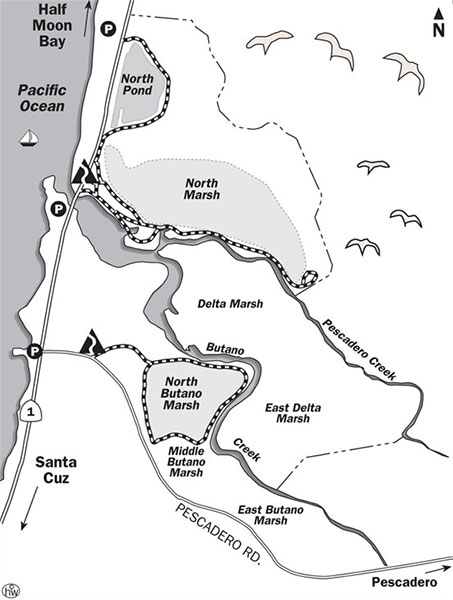
From anywhere on the peninsula, take the Bayshore Freeway (Highway 101) or Interstate 280 to Highway 92. Take 92 west to Half Moon Bay and follow it to the end. Turn south (left) on the Coastal Highway (Route 1) and in approximately 15 miles you will see signs for Pescadero State Beach. The marsh is on the opposite side of the road from the beach. From San Francisco follow I-280 to its intersection with Highway 1 south of Daly City and follow Highway 1 down the coast. There are winding ways via mountain roads for those who want to explore the interior of the county. A day in this area can be easily combined with other stops along Skyline, at Memorial Park, or along the Cloverdale/Butano/Gazos Creek corridor.
Red Markers: Parking Area or Trail Head
Hover mouse pointer over marker, or click marker, for identification.
There is a parking fee at the northern Pescadero Beach lot, currently $6.
The parking lots along SR1 open from 8:00 am to sunset. The pulloffs along Pescadero Road can be used at any hour if one wants to listen for rails or look for owls.
In spring and summer be on the alert for ticks. Poison oak increases along the Sequoia Audubon Trail as one heads east. There are trails, and old remnants of trails, that can place you inadvertently in the marsh: don't go exploring without your boots on! Along the trail out of the Water Lane entrance, there are snake pits established by the park to safeguard endangered species: these are covered with wooden boards. As always, take care along the rocky shoreline, and beware that rip tides occur along the open beach.
There are portable toilets at both of the south parking lots and at the northern parking lot for Pescadero Beach (across from North Pond). The nearby town of Pescadero has a gas station, restaurants and markets.
Park Offices can be reached by phone at 650-879-2170.
As befits a major location like Pescadero State Beach, the situation on eBird has numerous subdivisions. There are four hotspots for distinct segments of the park itself, and two close ancillary hotspots. For ease of reading and linking, these are presented in tabular form:
1. Pescadero SB--west of Hwy 1 only hotspot information. This location has data in all 48 quadrants.
2. Pescadero SB--Pescadero Marsh Natural Preserve (east of Hwy 1) hotspot information. This location has data in all 48 quadrants.
3. Pescadero SB--south marsh hotspot information. This location has data in 44 of 48 quadrants.
4. Pescadero SB--Water Lane hotspot information. This location has data in 46 of 48 quadrants.
5. Agricultural Field@corner of Hwy 1 and Pescadero hotspot information. This location is underpopulated, with data in a mere 12 of 48 time quadrants. The area tends to draw more attention when there are rare geese in the field, but the distinctiveness of the habitat adjacent to the marsh could merit more sustained birder attention.
6. The Willow Farm hotspot refers to the areas of Water Lane just before the park entrance. Hotspot information can be seen here. This site is dramatically underutilized, with data in a mere nine of forty-eight time quadrants.
Please submit your sightings to eBird under the Hot Spot designations to increase the usefulness of the sightings.
Sequoia Audubon has fostered member interest in this park, and maintains the Sequoia Audubon Trail here. There are regular docent-led trips at this park, as often as two times a month. Visit the field trip page on the main Sequoia Audubon website for the upcoming schedule.
Not to be outdone, iNaturalist also has multiple locations for this park! Corresponding to the first eBird spot is the place marker for Pescadero State Beach. This corresponds to eBird hotspot 1.
The second iNaturalist place marker roughly corresponds to eBird hotsots 2, 3, & 4, and can be found under the name Pescadero Marsh Natural Preserve.
Pescadero Marsh and Beach have been the site for the past ten years of Sequoia Audubon Society's annual October fun(d)-raiser Big Sit. Reports and data analysis will continue to accumulate on the designated Big Sit page on the Sequoia Audubon website.
Point Blue (the artist formerly known as PRBO) maintains a long-running study of Western Gulls; if you see Western Gulls with colored leg bands, note the respective legs and colors, and contact PRBO to forward this data to the researchers on this project.
Point Blue also conducts Snowy Plover surveys in this area. If you see a Snowy Plover with a leg band, report it to the good folks at "PRBO."
The San Francisco Bay Bird Observatory (SFBBO) is conducting a long-range study of gull movements in the Bay Area. California Gulls have been leg-banded with plastic colored bands. If you see any of these gulls, please note the leg and the color of the band; if it is possible to read the number on the band, record that also. This information can be shared directly with Carly at SFBBO (cschacter@sfbbo.org). If the birds also have a metal band, and you can read that number, too, please report that to the National Bird Banding Lab.
Sequoia Audubon Society has sponsored 51 field trips to this site through 2019.

Adult Bald Eagle. This charismatic bird became more frequent at Pescadero in the late 2010s, and it should be watched as a potential nester. February 2021 (Jerel Crawford)

Baird's Sandpiper (background) in a nice comparison to Western Sandpiper (left edge foreground), in a lifer sighting for the photographer, August 2016 (Kent Forward)

A White Wagtail that spent the winter of 2020-2021 in Santa Cruz county, came up to visit Pescadero one day in November 2020 (Lorri Gong)
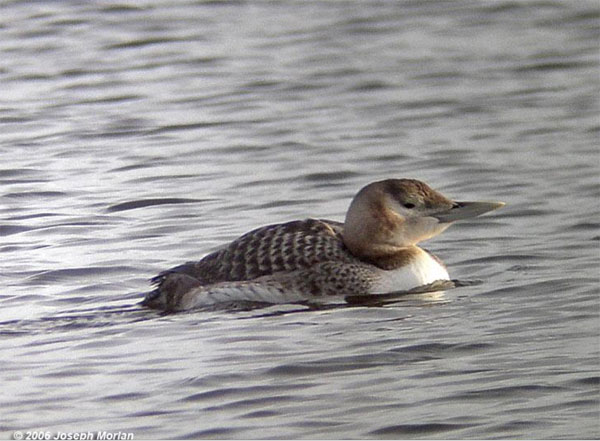
Yellow-billed Loon at Hwy 1 Bridge over Pescadero Creek, November 2006 (Joe Morlan)

Brandt's and Pelagic Cormorants, Pescadero State Beach, September 2007 (Jennifer Rycenga)
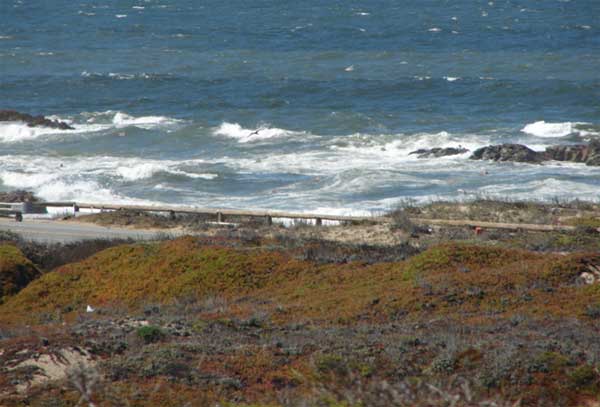
Pescadero State Beach, looking at the Oceanside of Pescadero Creek Mouth, fall 2007 (Jennifer Rycenga)
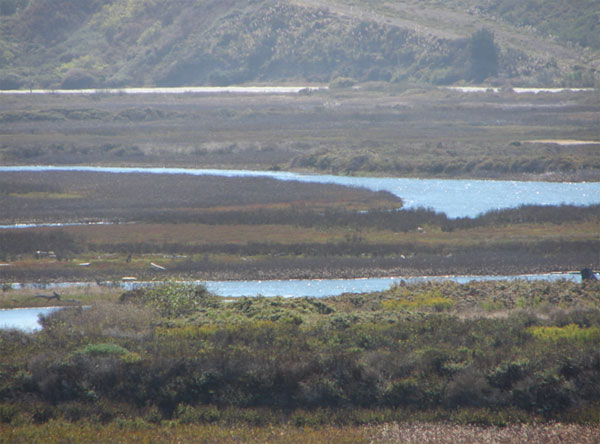
Pescadero Marsh, near the confluence of Butano and Pescadero Creeks (Jennifer Rycenga)
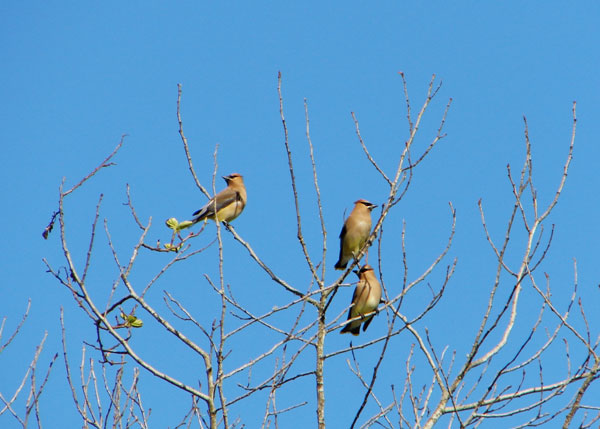
Cedar Waxwings in migration, Pescadero State Marsh, Water Lane riparian, May 2009 (Jennifer Rycenga)

Red Knot leading Black Turnstones, Pescadero State Beach, August 2011 (Pati Rouzer)
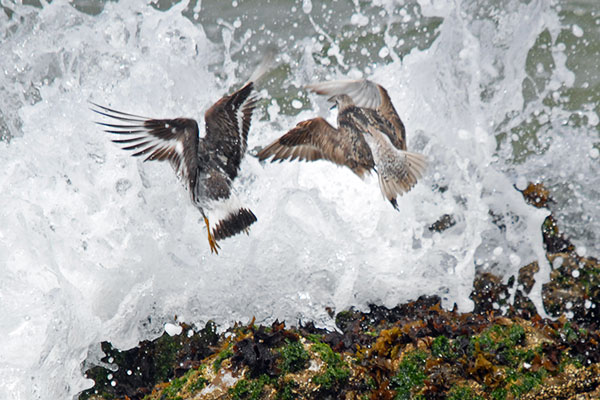
Surfbird and Red Knot escaping a wave, Pescadero State Beach, August 2011 (Pati Rouzer)
Author: Peter Metropulos and Cliff Richer, Uploaded: